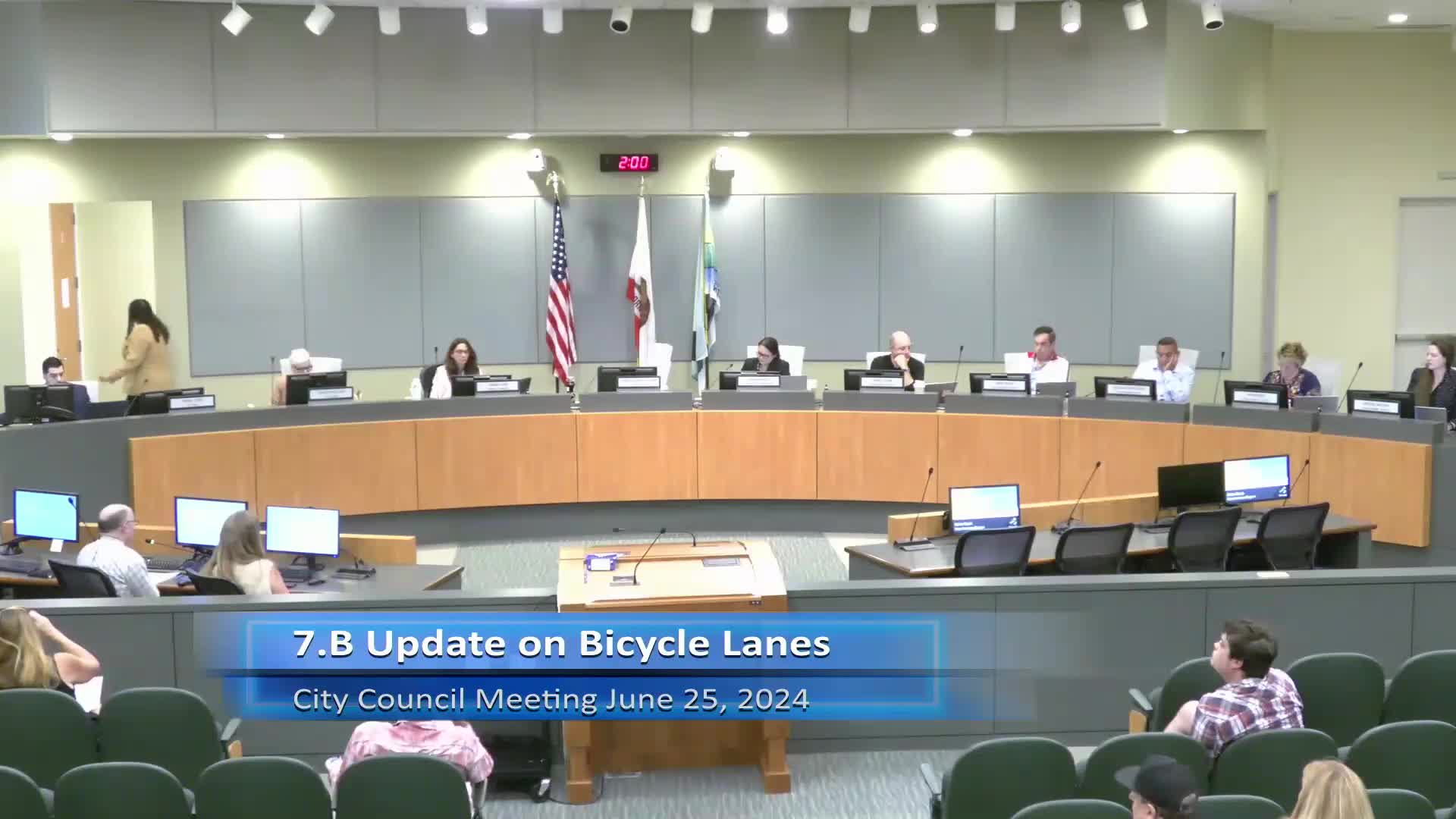City plans ambitious bike network to enhance community mobility
June 25, 2024 | Watsonville, Santa Cruz County, California

This article was created by AI summarizing key points discussed. AI makes mistakes, so for full details and context, please refer to the video of the full meeting. Please report any errors so we can fix them. Report an error »

During a recent government meeting, officials discussed the development of a comprehensive bike network plan for Watsonville, emphasizing the importance of enhancing bicycle facilities to improve community connectivity and mobility. Assistant Community Development Director Justin Meek and traffic consultant Jaime Rodriguez presented a detailed overview of the existing bike infrastructure, which includes 84 centerline miles of road, of which only 14 miles feature bike lanes—approximately 17% of the total.
The presentation outlined four classes of bike lanes: Class 1 (multiuse paths), Class 2 (on-road bike lanes), Class 3 (shared roadways), and Class 4 (protected bikeways). The city currently has a mix of these facilities, but challenges remain in creating a cohesive and safe biking environment. The presenters noted that many existing bike routes are narrow and often lack adequate signage, which can compromise cyclist safety.
A significant point of discussion was the need for a new comprehensive bicycle plan, the first since the 2005 general plan, which is expected to be developed alongside the ongoing update to the general plan. This new plan aims to serve as a roadmap for future projects and funding opportunities.
Council members expressed concerns about the current state of bike lanes and the need for consistency in their design across different corridors. Council Member Montesino highlighted the importance of selecting a unified approach to bike lane classifications, particularly on major routes like Freedom Boulevard, to avoid confusion and enhance safety for cyclists.
The meeting also touched on insights gained from a recent trip to the Netherlands, where officials observed successful multimodal transportation systems that prioritize cycling and pedestrian safety. The Dutch model, which features protected bike lanes and a focus on slower traffic speeds, inspired local leaders to consider similar strategies for Watsonville.
Council members raised questions about funding for bike lane improvements and the logistical challenges of integrating new bike facilities within existing roadways. The discussion underscored the need for a balanced approach that considers both cyclist safety and the flow of vehicular traffic.
As Watsonville moves forward with its bike network plan, officials are committed to creating a safer and more accessible environment for cyclists, while also addressing the broader implications for community mobility and urban planning.
The presentation outlined four classes of bike lanes: Class 1 (multiuse paths), Class 2 (on-road bike lanes), Class 3 (shared roadways), and Class 4 (protected bikeways). The city currently has a mix of these facilities, but challenges remain in creating a cohesive and safe biking environment. The presenters noted that many existing bike routes are narrow and often lack adequate signage, which can compromise cyclist safety.
A significant point of discussion was the need for a new comprehensive bicycle plan, the first since the 2005 general plan, which is expected to be developed alongside the ongoing update to the general plan. This new plan aims to serve as a roadmap for future projects and funding opportunities.
Council members expressed concerns about the current state of bike lanes and the need for consistency in their design across different corridors. Council Member Montesino highlighted the importance of selecting a unified approach to bike lane classifications, particularly on major routes like Freedom Boulevard, to avoid confusion and enhance safety for cyclists.
The meeting also touched on insights gained from a recent trip to the Netherlands, where officials observed successful multimodal transportation systems that prioritize cycling and pedestrian safety. The Dutch model, which features protected bike lanes and a focus on slower traffic speeds, inspired local leaders to consider similar strategies for Watsonville.
Council members raised questions about funding for bike lane improvements and the logistical challenges of integrating new bike facilities within existing roadways. The discussion underscored the need for a balanced approach that considers both cyclist safety and the flow of vehicular traffic.
As Watsonville moves forward with its bike network plan, officials are committed to creating a safer and more accessible environment for cyclists, while also addressing the broader implications for community mobility and urban planning.
View full meeting
This article is based on a recent meeting—watch the full video and explore the complete transcript for deeper insights into the discussion.
View full meeting
